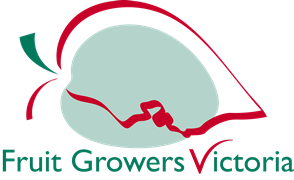Because of the complexity of soils, the availability of elements and the difficulty of relating nutritional status of the sampled surface soil to the whole rooting volume of the tree, nutrition management based on soil analysis alone is not recommended.
In fact, you have to be careful, because you can be misled by a soil analysis, no matter how thorough it is. That is because some nutrient elements may be present in the soil in sufficient quantities, but cannot be used by the trees, because of insolubility, competing nutrients, weakened root systems, drought, waterlogging, salt, the pH of the soil is too acidic (low) or too alkaline (high), and a host of other causes.
Soil analysis cannot measure some of the most important factors that affect how fruit trees absorb nutrients from the soil. Soil temperature, soil wetness, compaction, soil structure degradation and drainage are just a few of these factors.
It is not that soil analysis has no importance. It is crucial that you test your soil before you buy land to establish an orchard or replant. You need to know the fertility of your soil that is the physical and chemical parts of your soil. Much of this is controlled by the pH of the soil. It is also useful to know the CEC (cation exchange capacity) value of your soil, the individual cations (calcium, magnesium, potassium, sodium and aluminium) expressed as a percentage of the CEC. It is also important to know how well the soil is structured by calculating the calcium:magnesium ratio.
You must test your soil if it needs lime and if it needs gypsum to improve soil structure and drainage. The results of a soil analysis are as good as the sample of soil that is taken. Make sure that you take representative samples from the topsoil and the subsoil. Keep these separate. The topsoil is usually sampled to determine the pH and lime requirement, and the subsoil for gypsum requirement.
A soil test can also tell you if there is salt as sodium chloride in the soil and how you may be able to get rid of this salt. But a soil test cannot predict the nitrogen requirements of fruit trees owing to difficulty in measuring the great range of factors which control the rate of mineralisation of organic soil nitrogen. Greater success has been achieved in correlating soil phosphorous and tree response, but the picture is often confused by phosphorus reserves in the tree – which may be revealed by leaf analysis.
It is the tree that sets the crop, not the soil. That is why you should use leaf analysis and perhaps sap analysis as well. If you analyse leaves and sap at certain times of the season and from a certain type of leaf, you can determine exactly how much of each nutrient the tree has absorbed from the soil and accumulated in the leaves.
The concept is that leaf analysis can be regarded as an index of the nutritional status of the tree, irrespective of the nutrient supplies in the soil.
The concentration of nutrient elements in leaves is expressed in terms of a series of standard ranges such as deficient, low, adequate, high or toxic ranges. These standard ranges will hold in the location in which they were developed and will also hold in other regions and countries.
Environmental factors such as weather in different seasons and soil type differences do not affect the relationship between leaf composition and tree performance without also affecting leaf composition.
“Plant Analysis – An Interpretation Manual” by D. Reuter and J.B. Robinson, is the “bible” to make sense out of leaf analysis results.


